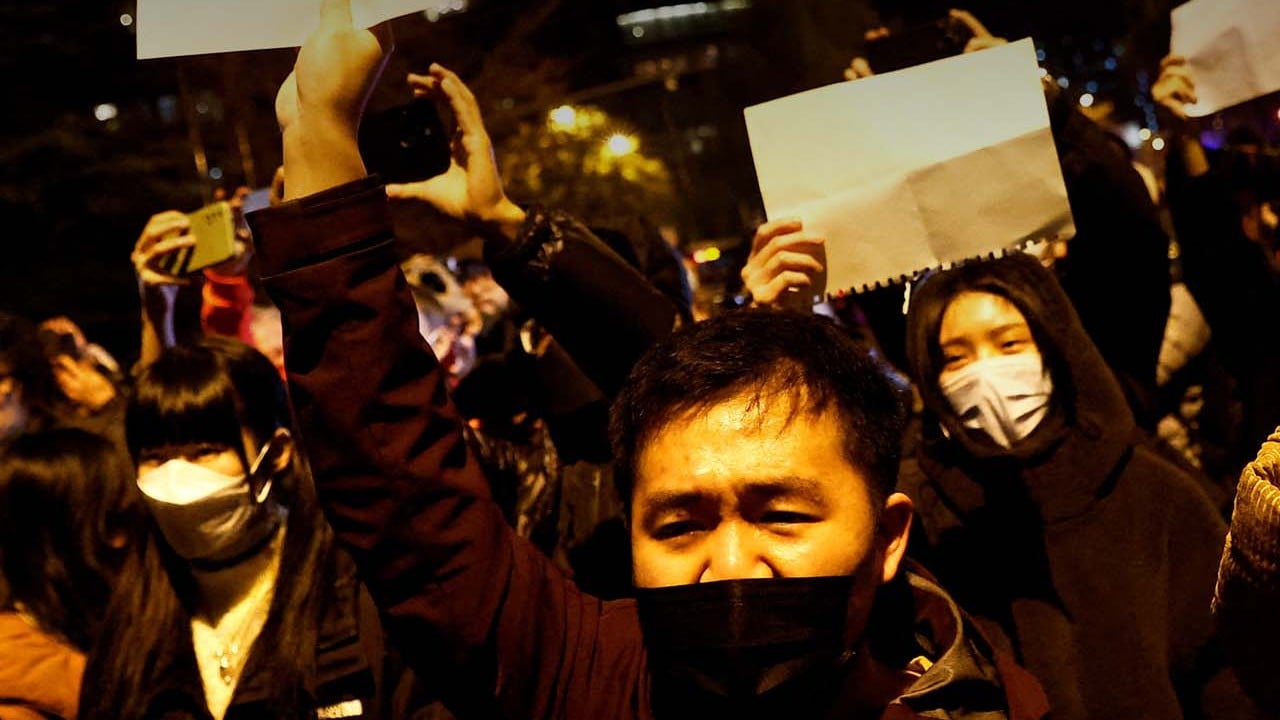
Coronavirus in China: cities ease some rules, ban blocking of exits amid protests and surge in cases
- After residential fire in Urumqi claimed 10 lives, lockdown critics allege blockades around the building delayed firefighters
- While Xinjiang officials say escape from fire was not blocked, Beijing says use of solid objects to enclose or isolate areas is ‘strictly forbidden’
Health authorities in Beijing said high-risk areas should be defined by units and buildings. These areas could be expanded when transmission risks were unclear or transmission was widespread in the community but only after “rigorous assessment” .
The remarks are in line with a push by China’s top leadership for a more “targeted and precise” approach to zero-Covid as restrictions, including the quarantine period for arrivals, are gradually eased.
The use of solid objects to enclose or isolate areas was “strictly forbidden”, as was the blocking of fire escape routes, unit doors and community doors, local officials said in Beijing on Sunday.
Liu said the current outbreak was mainly driven by the highly transmissible Omicron variant BF.7 and asked districts in the capital to optimise prevention and control measures.
“The number of new daily cases remains high, especially in Chaoyang district,” he said. “All districts should strengthen the management and control of people and areas at risk.”
Slogans and blank paper banners as patience over China’s zero-Covid wears thin
Wang Xiaoe, an official with the Beijing municipal health commission, said the city would ensure that medical services were not interrupted or delayed.
“If people [in sealed-off areas] at risk of Covid-19 need to go out for medical treatment, transport can be provided,” she said. “Medical institutions should not refuse to receive patients who are at risk of Covid-19 and go to see a doctor on their own.”
Xinjiang officials insisted the building where the fire broke out was not sealed off. They also denied that the victims, most of whom died after inhaling toxic fumes, were blocked from escaping.
Officials also said flights from Urumqi to Changsha in Hunan province and Sanya, Hainan province, had resumed.
Experts have said that even though the new Omicron strains are highly infectious, they are much less deadly.
The other epicentre, Guangzhou, announced on Sunday evening that groups confined to their homes – including seniors, people working from home and students taking online classes – could be exempted from compulsory test swabs.
Is China underestimating its Covid-19 numbers in its latest outbreak?
Students and teachers in the southern economic hub have been tested daily since the outbreak started in late October, including those teaching and taking online classes.
Chinese media outlet Caixin reported parents’ claims that students had to be tested before 4pm every day for their school to submit the data to authorities by 5am.
Guangzhou reported 7,365 new cases on Sunday, including 7,166 asymptomatic infections, representing nearly 20 per cent of the national numbers. It was exceeded by landlocked Chongqing, which reported 9,685 cases on Sunday, of which 9,447 showed no symptoms.
On Monday, 104 of the Covid-19 cases were identified as “severe”. Seven people – all aged over 80 and with comorbidities – have died in China in this wave of infections.
Additional reporting by Holly Chik



